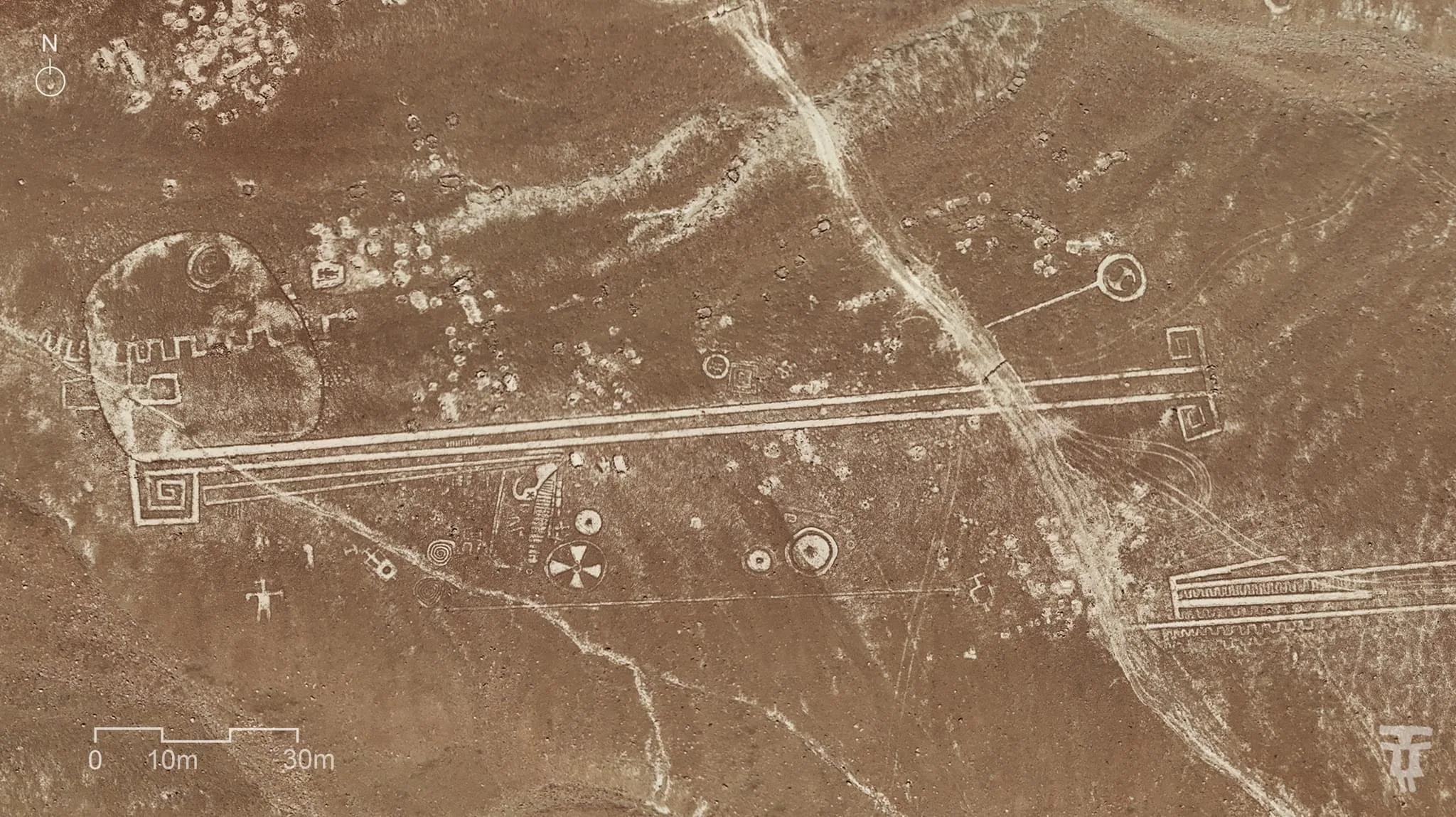Deep in the arid expanse of Chile’s Atacama Desert lies one of the world’s most enigmatic and impressive collections of ancient art, the Atacama geoglyphs. These giant figures, etched into the desert floor, have captured the curiosity of archaeologists, historians, and art enthusiasts for decades. Recent discoveries and ongoing research into the geoglyphs have begun to shed new light on their origin, meaning, and cultural significance.
The Atacama Desert, one of the driest places on Earth, is home to over 5,000 geoglyphs that span a range of sizes, shapes, and designs. These massive designs, some stretching over hundreds of meters, include representations of animals, humans, and abstract symbols. Located across hills, plains, and ravines, the geoglyphs are thought to date back to between 600 and 1500 AD, representing the legacy of several pre-Columbian cultures.
The Atacama geoglyphs were likely created by removing the dark, oxidized rock surface to reveal the lighter soil beneath. The technique, called “negative geoglyphs,” contrasts with other well-known geoglyphs like the Nazca Lines in Peru, which are made by adding stones to the ground.
While these geoglyphs have been known to the academic world since the 20th century, recent discoveries have added depth to our understanding of the cultures that created them. Archaeologists have uncovered more designs and, through technological advancements like aerial photography and drone mapping, have been able to study the scale and precision of these geoglyphs in detail.
One of the most significant findings in recent years is the confirmation of their use in ancient trade and religious ceremonies. Researchers believe that the geoglyphs acted as markers along ancient trade routes known as “caravans.” These routes connected the people of the Atacama with coastal communities and Andean highland groups, facilitating the exchange of goods such as textiles, metals, and llama caravans.

The geoglyphs’ geographic spread suggests their creators used them not only for practical purposes but also for spiritual reasons. The inclusion of animals, particularly llamas, in the designs points to their importance in both commerce and religious practices. In Andean cultures, llamas were sacred animals associated with fertility, prosperity, and ritualistic offerings.
The artistry of the Atacama geoglyphs is astounding in both scale and detail. Among the most famous is the Giant of Atacama, a human-like figure stretching over 119 meters long. This figure, believed to represent a deity, dominates the landscape and highlights the complex cultural beliefs surrounding the relationship between humans and the divine.
Other notable designs include depictions of animals like birds, snakes, and marine creatures. The presence of sea life in a desert context reinforces the idea of a trade network that reached the Pacific Ocean. These geoglyphs also contain abstract shapes, spirals, and lines that may have held symbolic meanings tied to celestial events, agriculture, or water sources.
The skill needed to create these geoglyphs is evident. Positioned to be viewed from nearby hills, the creators had a keen understanding of perspective and spatial awareness. This suggests that the geoglyphs were meant to be seen from specific vantage points, potentially guiding travelers or signaling areas of cultural importance.
The cultural significance of the Atacama geoglyphs has long been debated. Some scholars propose that they served as a form of communication between distant groups, offering a visual language that transcended spoken words. Others believe they were tied to religious pilgrimages, where travelers would stop at geoglyph sites to offer prayers or sacrifices to deities.
Interestingly, the geoglyphs seem to align with the paths of the ancient trade routes, known as “Capacocha,” and were likely used as markers for the journey. These caravans, primarily involving llamas, transported goods such as food, textiles, and metals. The large figures of llamas in the geoglyphs further highlight their importance to the region’s economic and religious life.
The spiritual connection is also supported by the depiction of figures in ceremonial poses, with some even thought to represent shamans or deities. These figures often have exaggerated features, perhaps to emphasize their role as intermediaries between the natural and spiritual worlds.
Despite their age, many of the Atacama geoglyphs remain remarkably well-preserved, thanks to the desert’s dry climate. However, they face threats from modern development, mining activities, and climate change. Efforts are underway to document and preserve these ancient works of art, with archaeologists working closely with local communities to ensure their protection.
In recent years, UNESCO has considered the Atacama geoglyphs for World Heritage status, which would help safeguard them from future threats. This recognition would not only protect the geoglyphs but also elevate their importance as a global cultural treasure.
Ongoing research continues to uncover new geoglyphs, and with advancements in technology, we are likely to learn more about the people who created them. Drone technology, for example, has allowed researchers to map areas previously inaccessible, leading to the discovery of new geoglyphs and revealing the true extent of these ancient designs.
The Atacama geoglyphs are a remarkable testament to the ingenuity, spirituality, and cultural complexity of the pre-Columbian peoples who inhabited the harsh desert landscape. As archaeologists and researchers continue to explore and analyze these designs, we gain valuable insights into the ancient civilizations that once thrived in the region.
